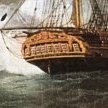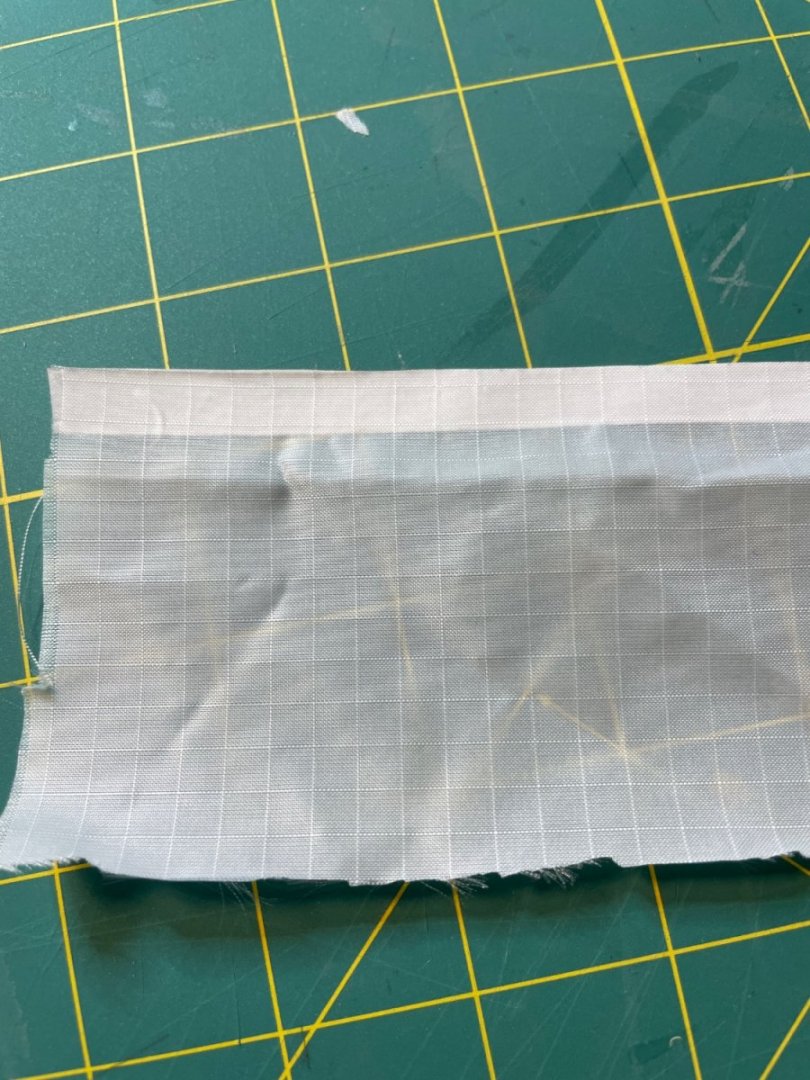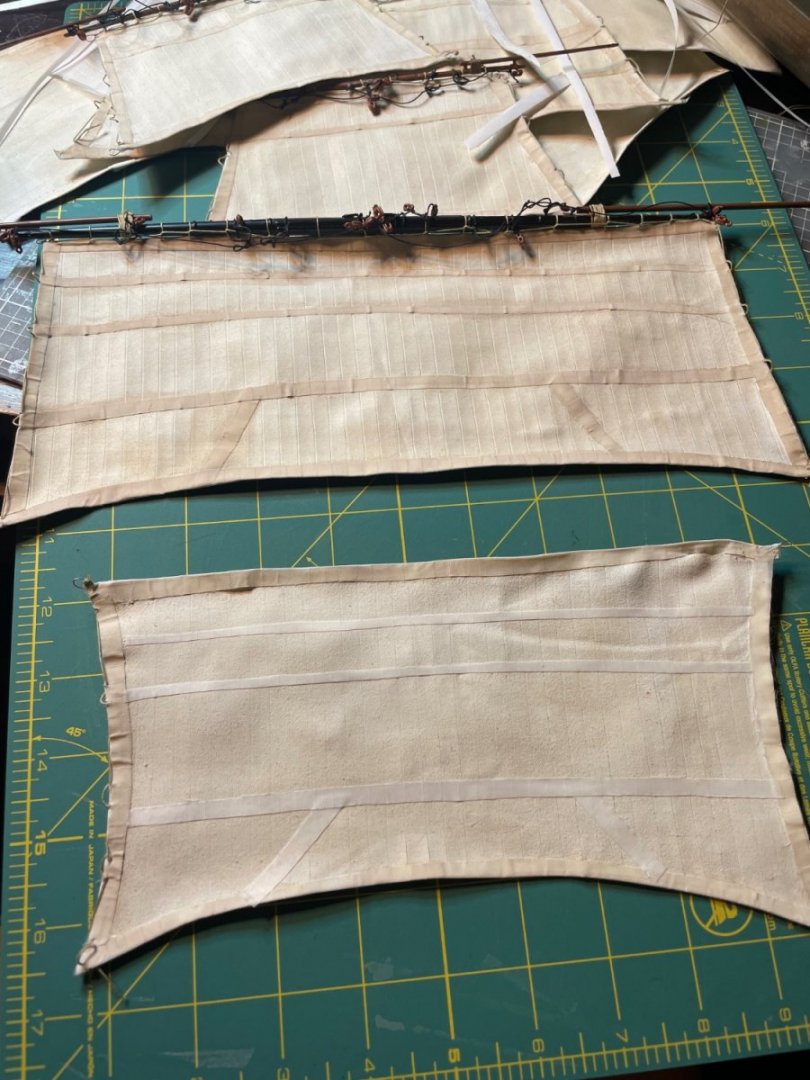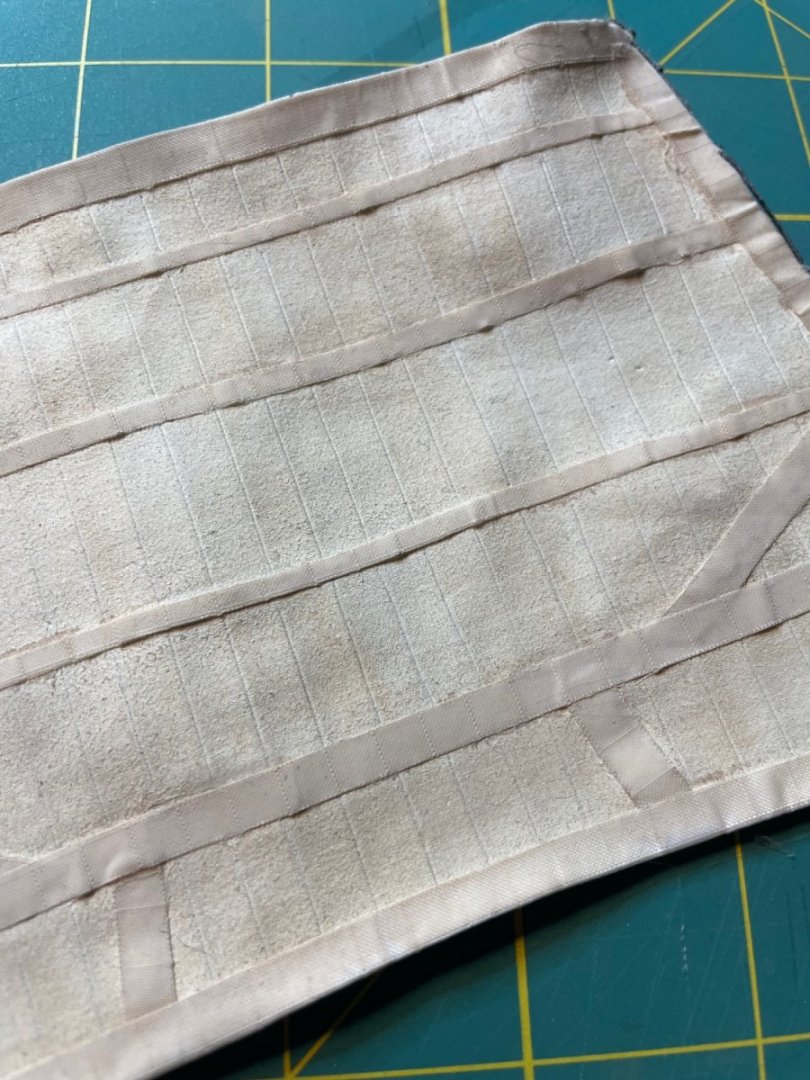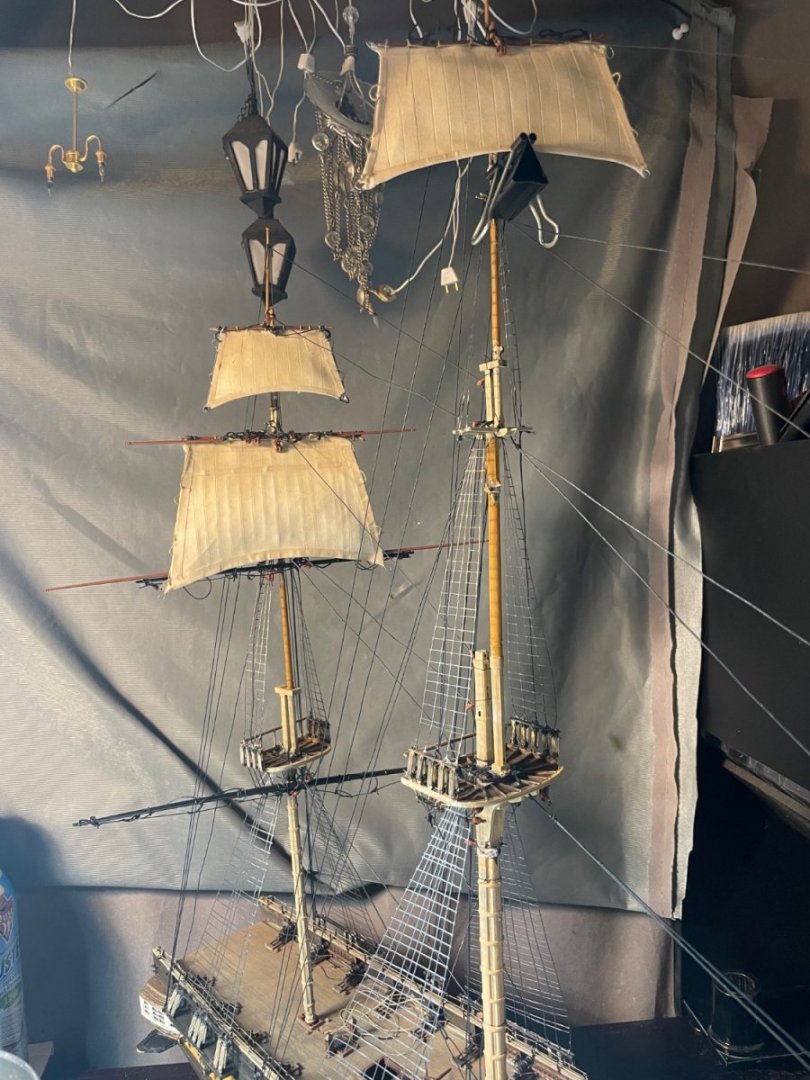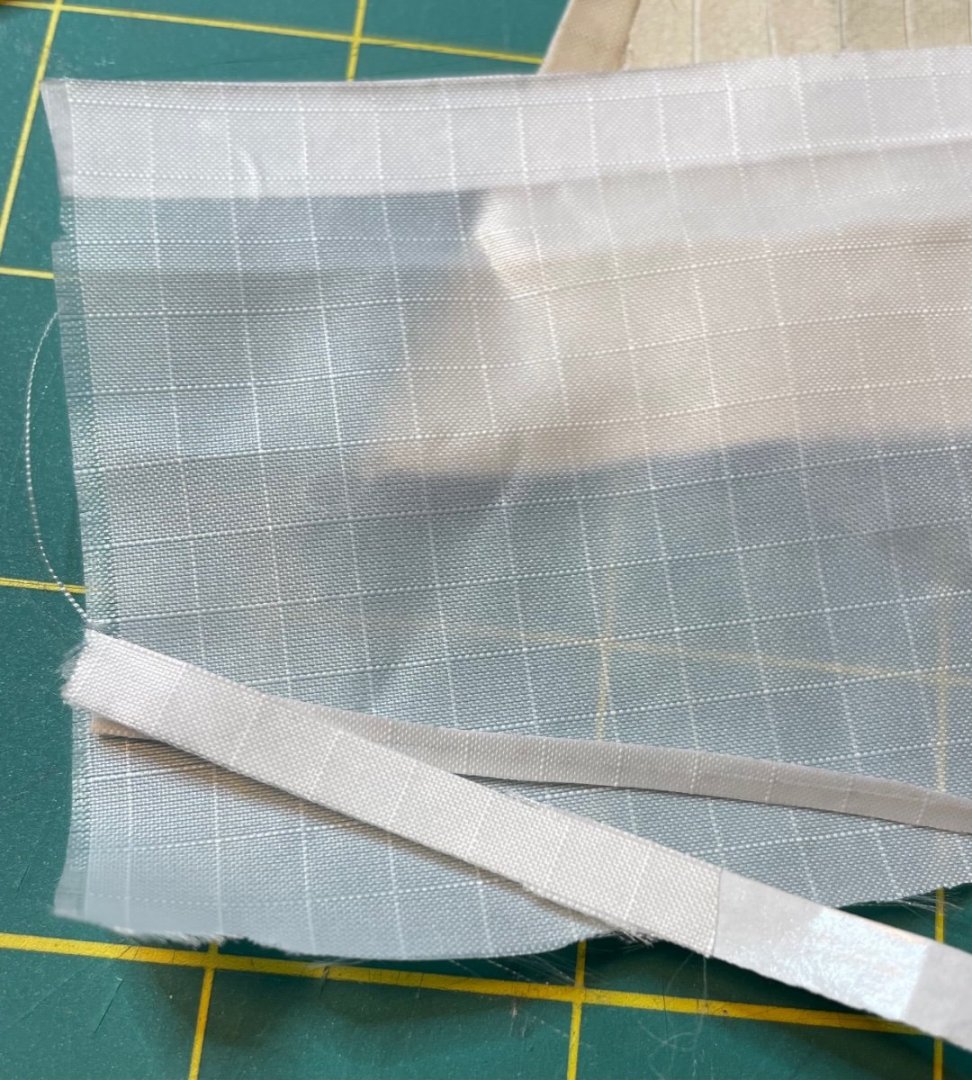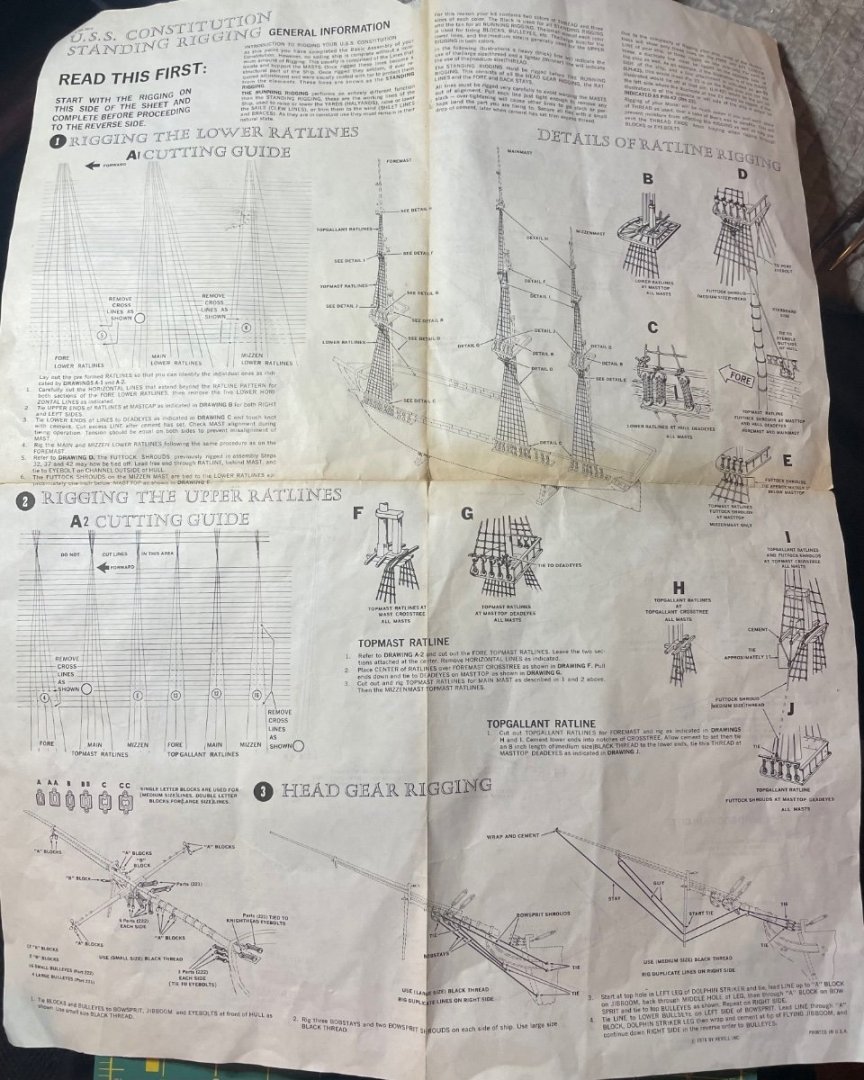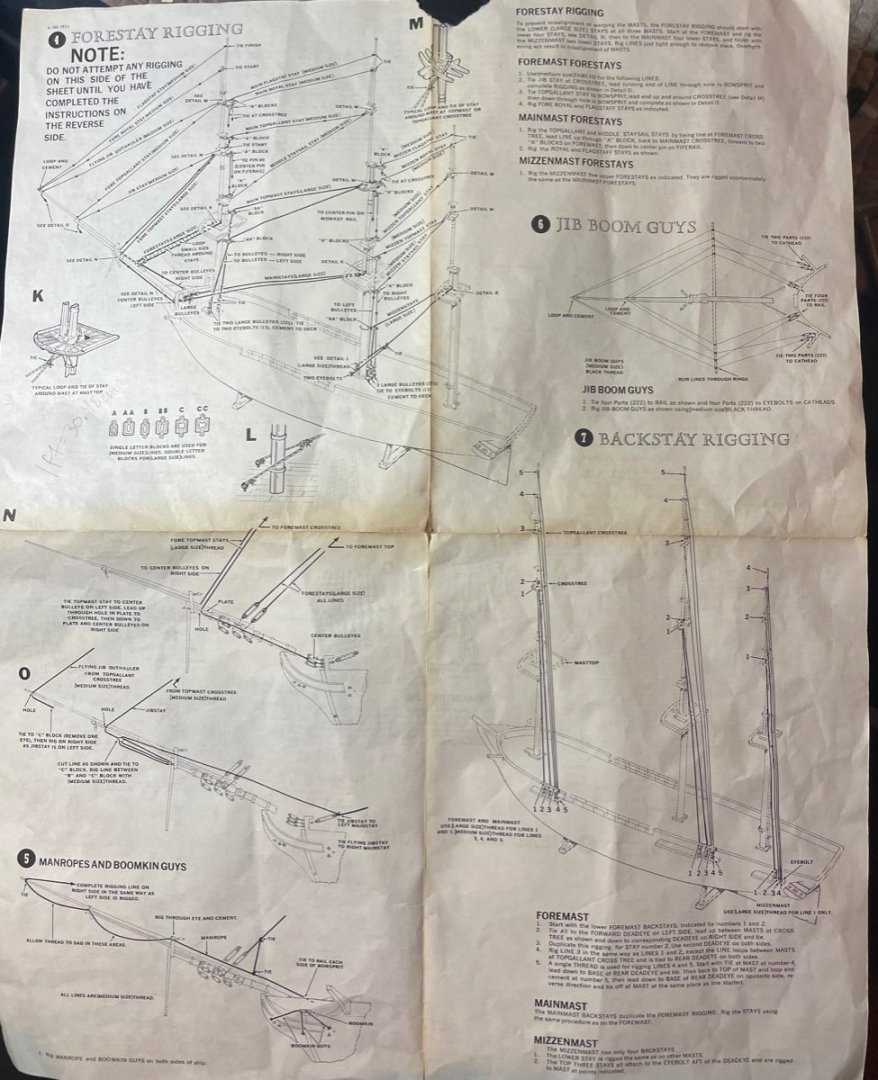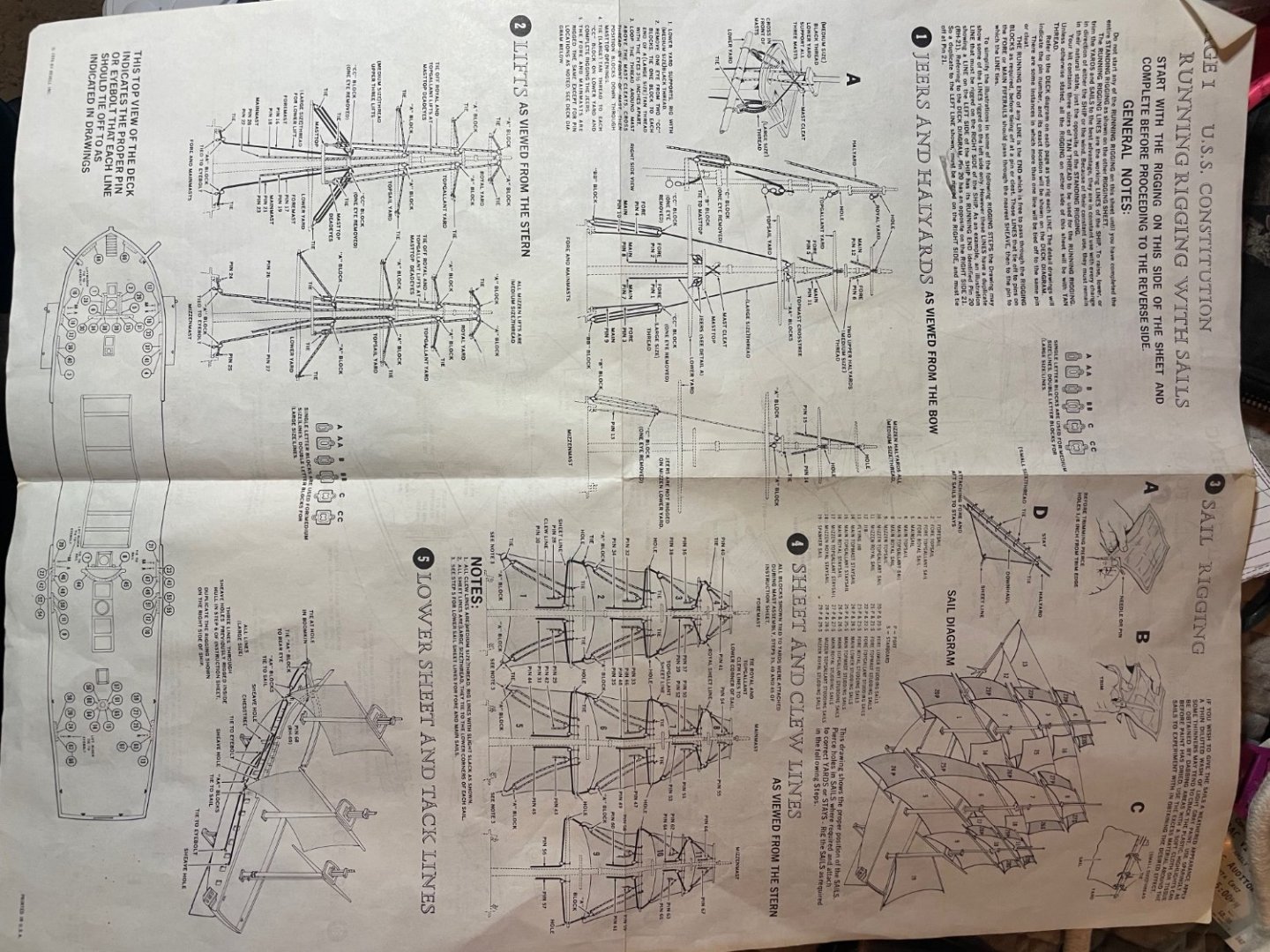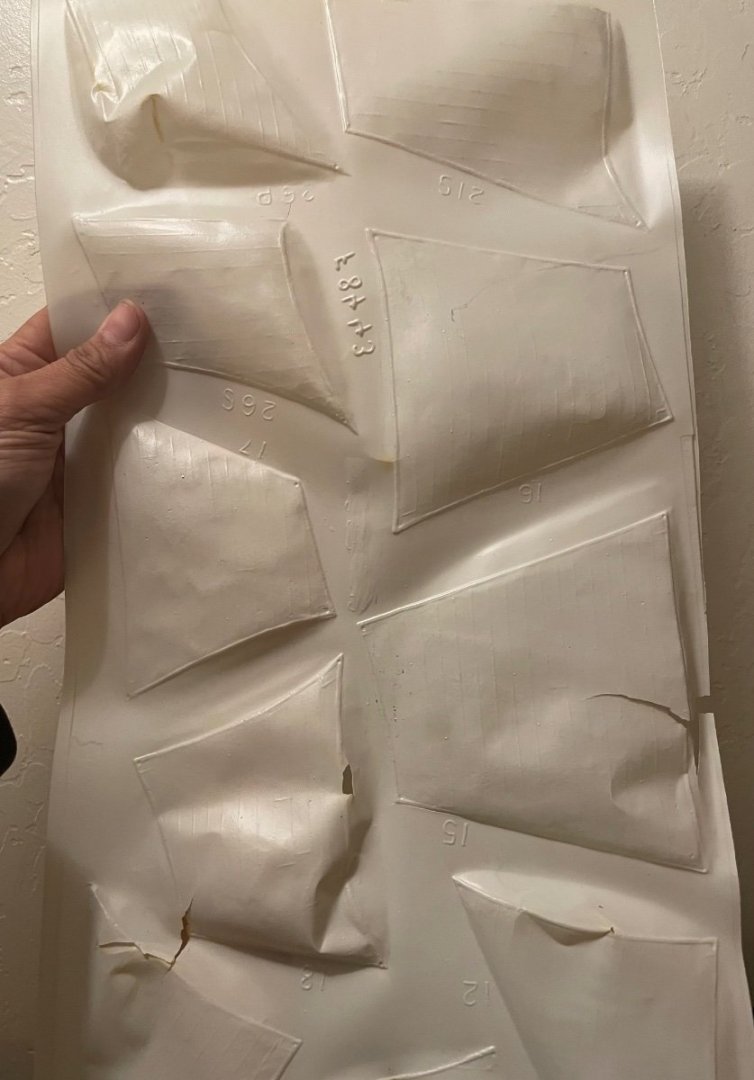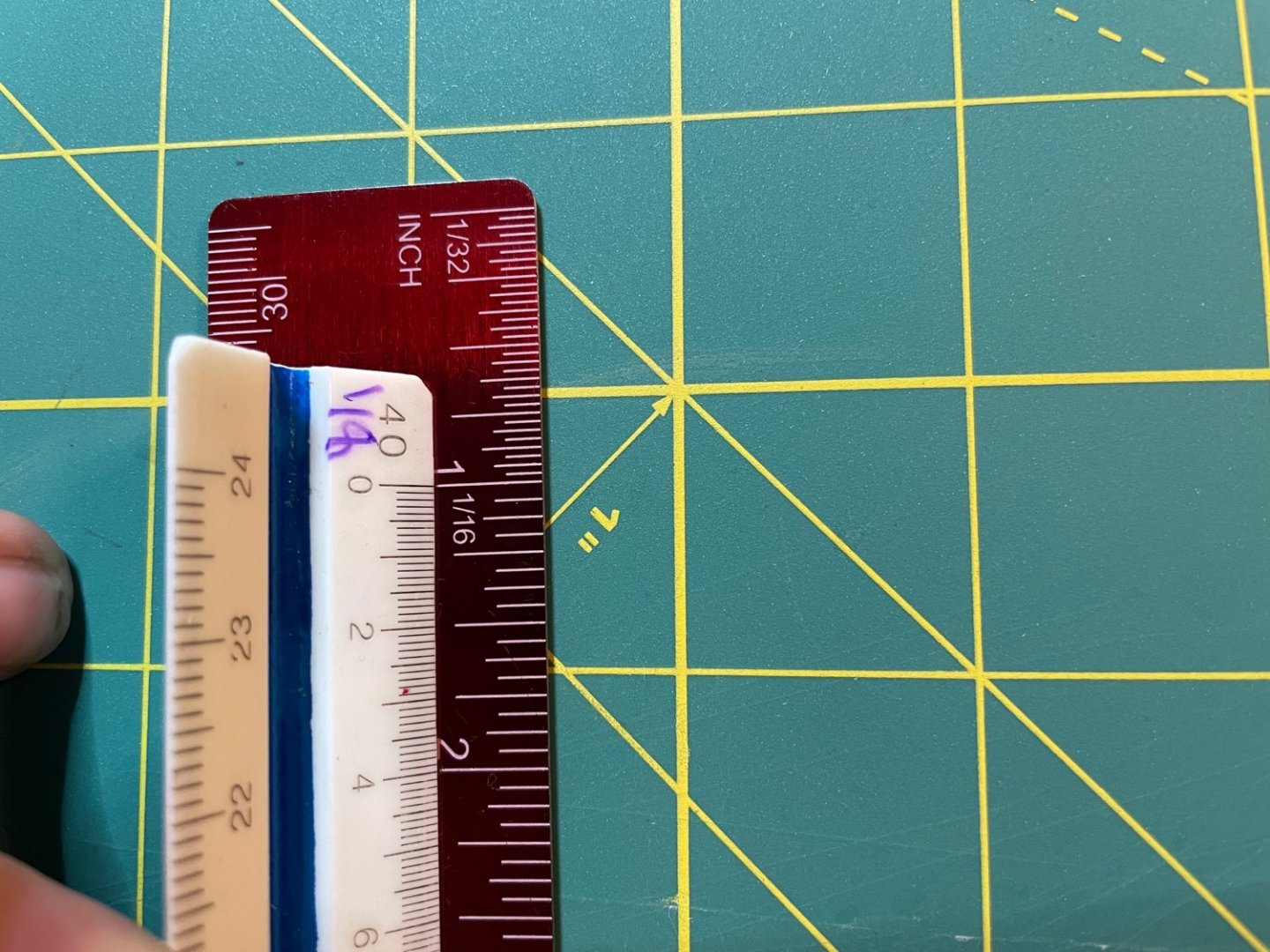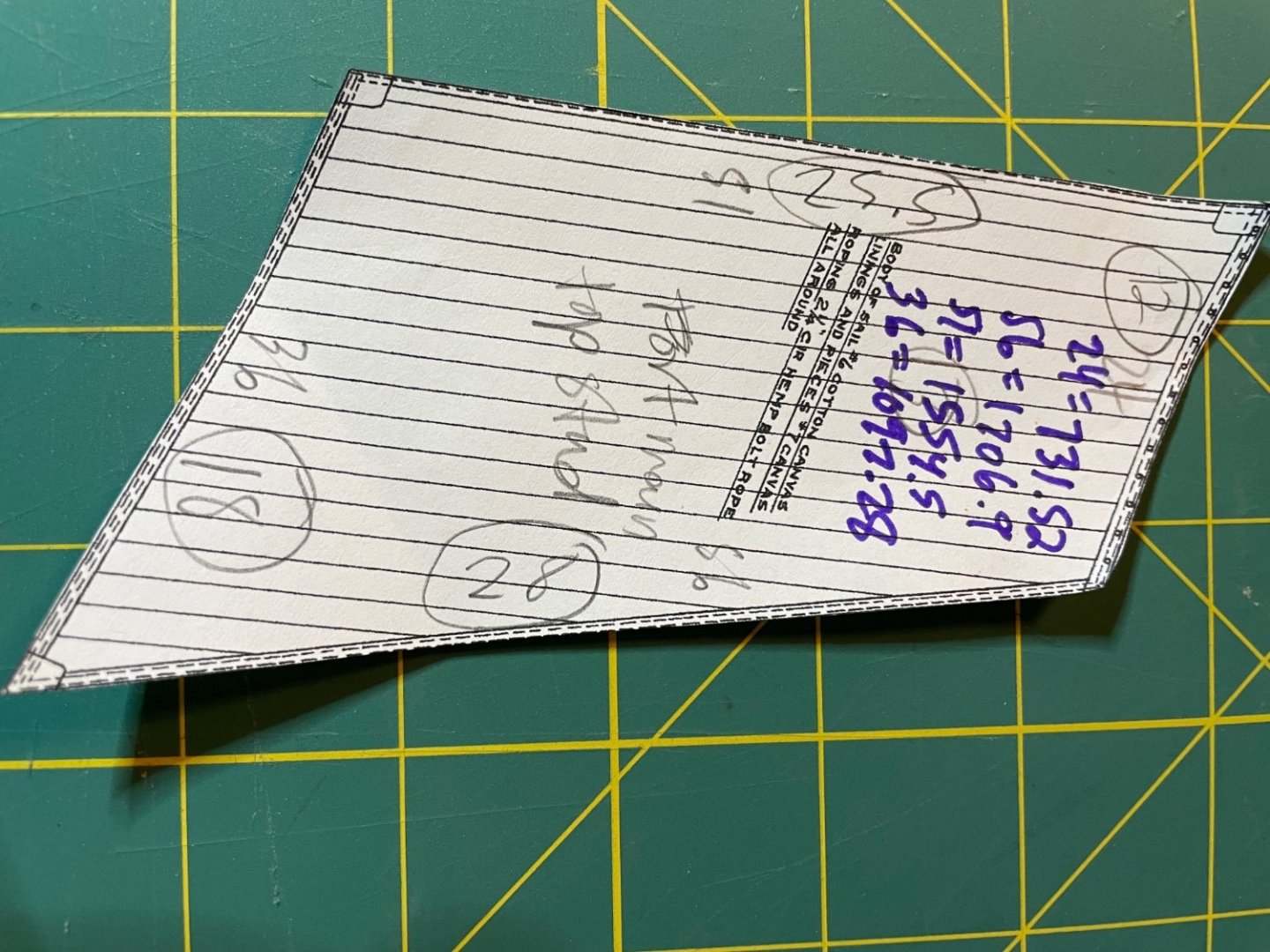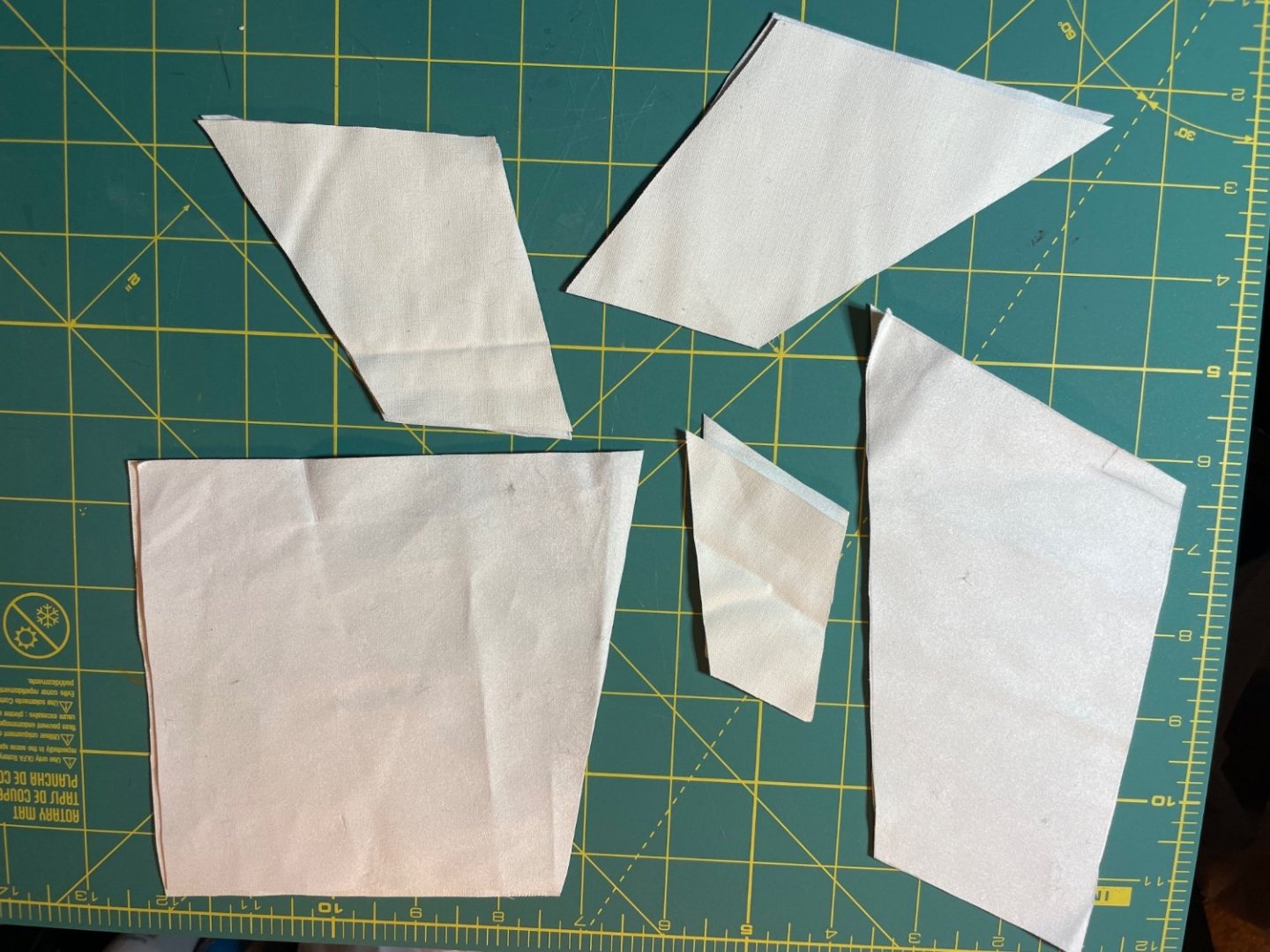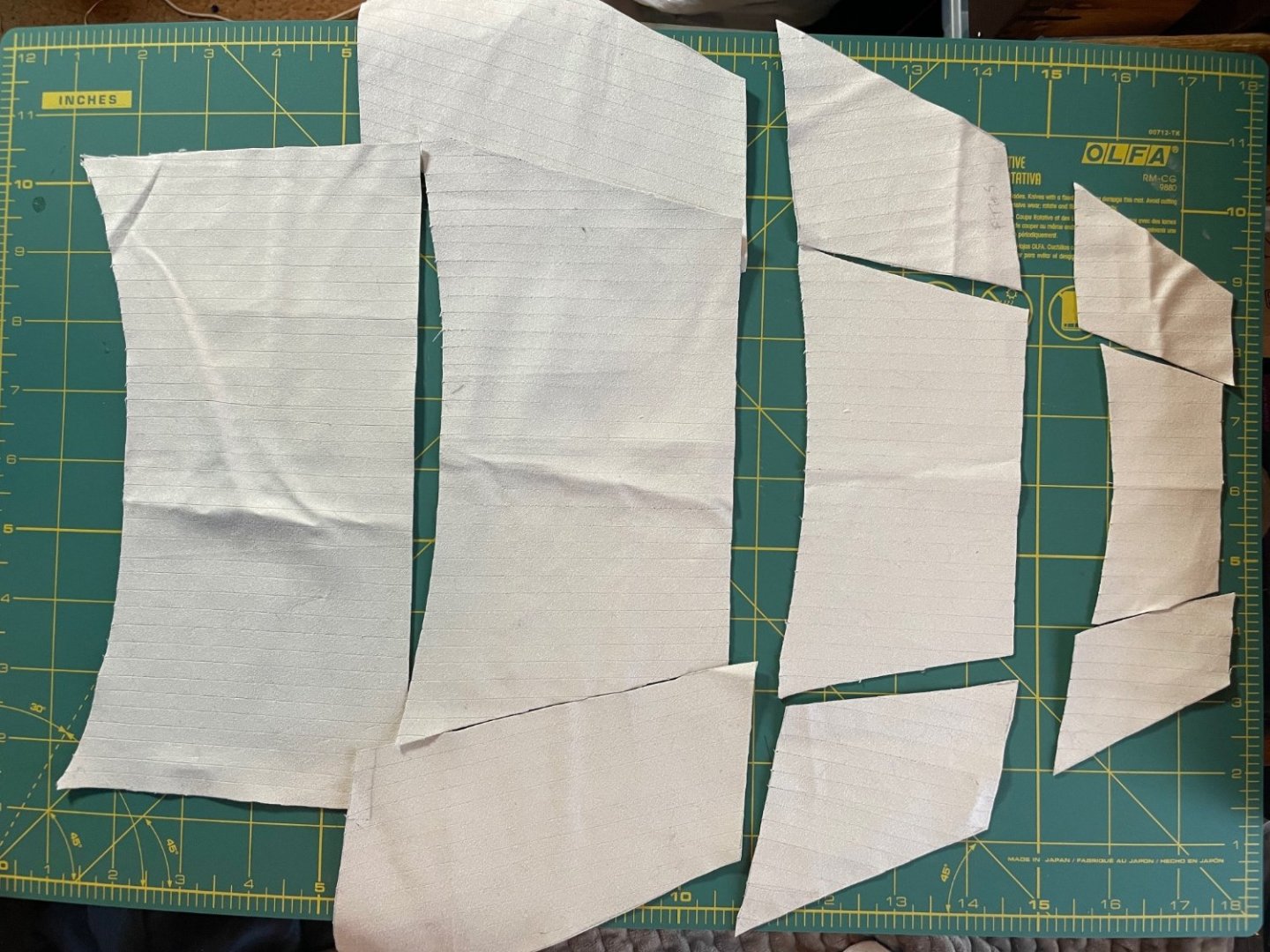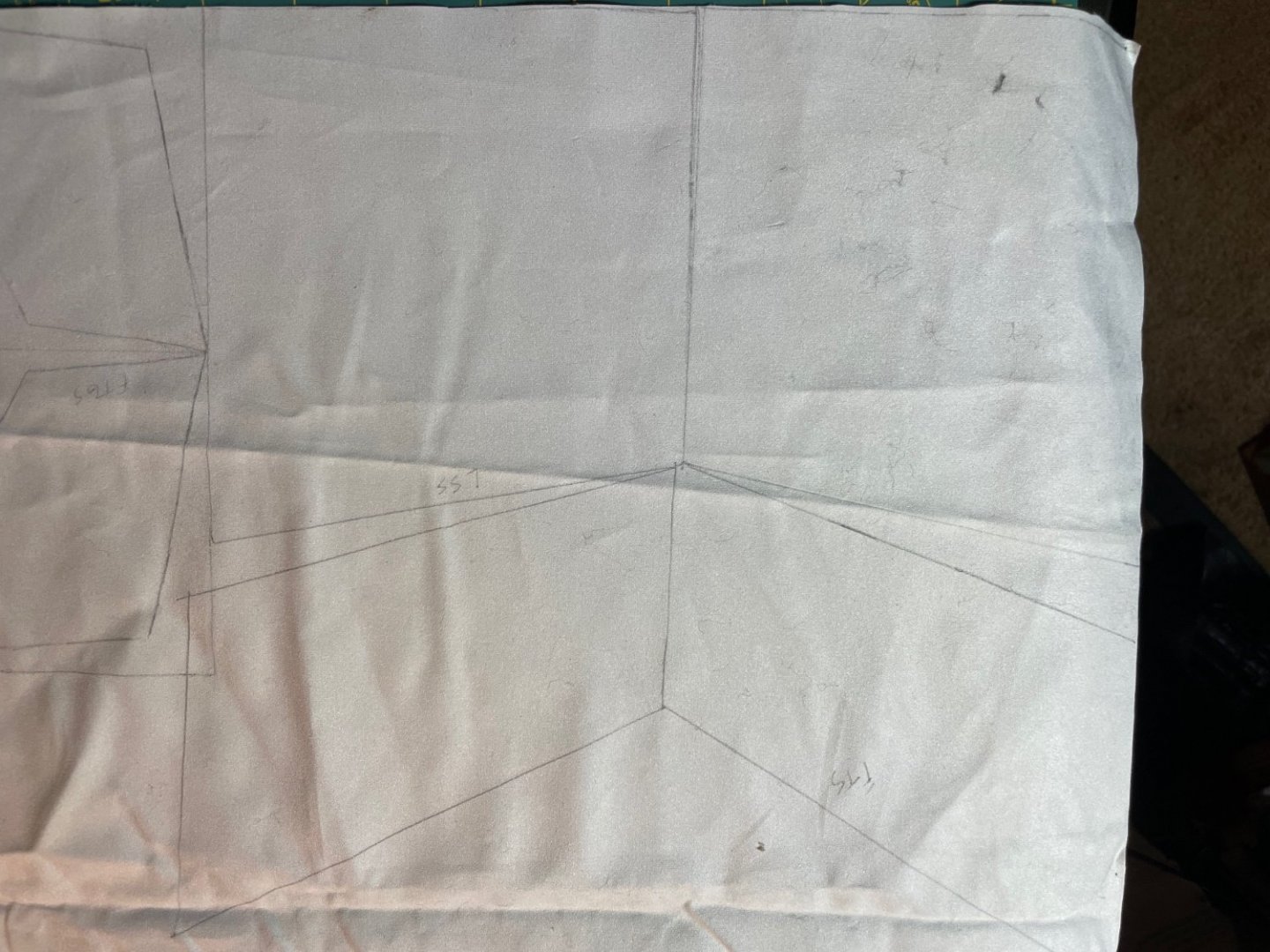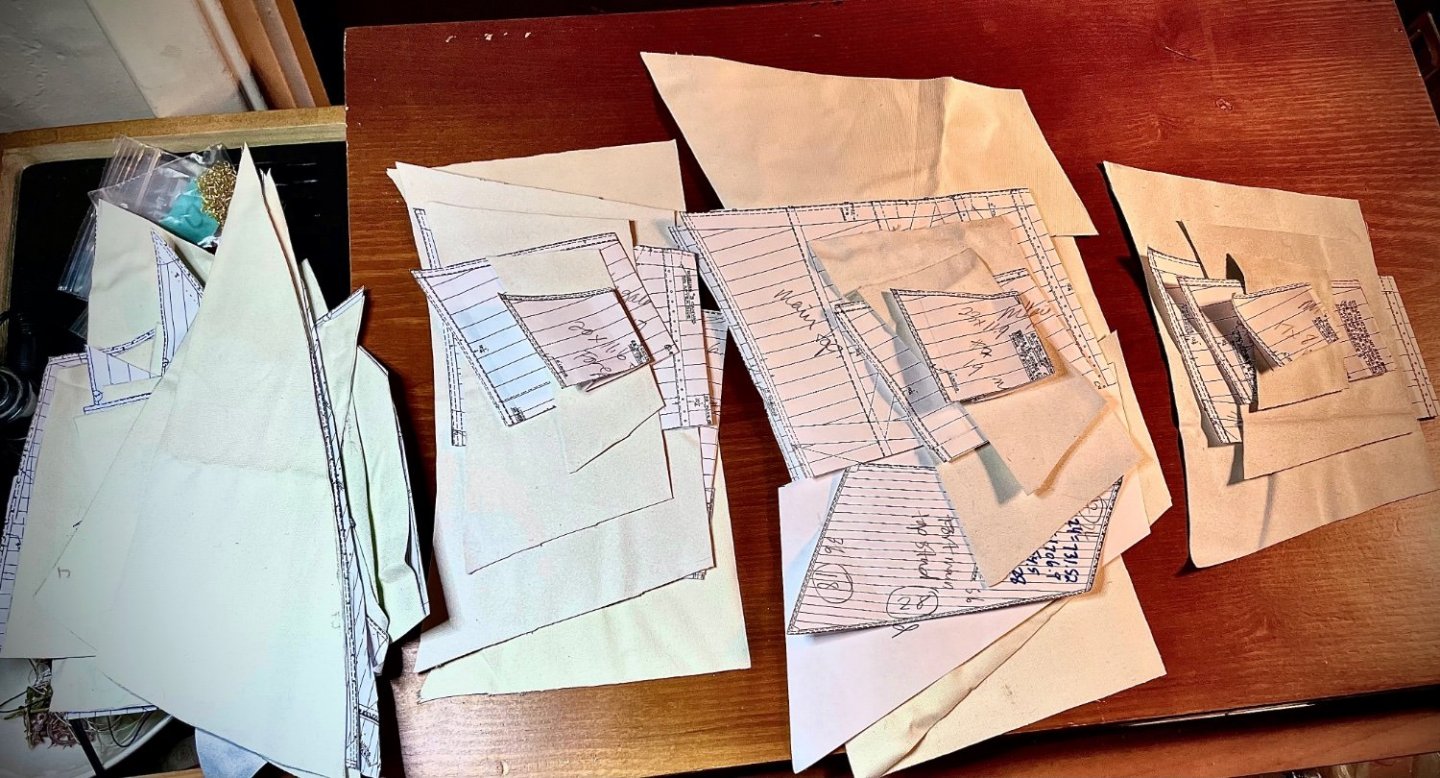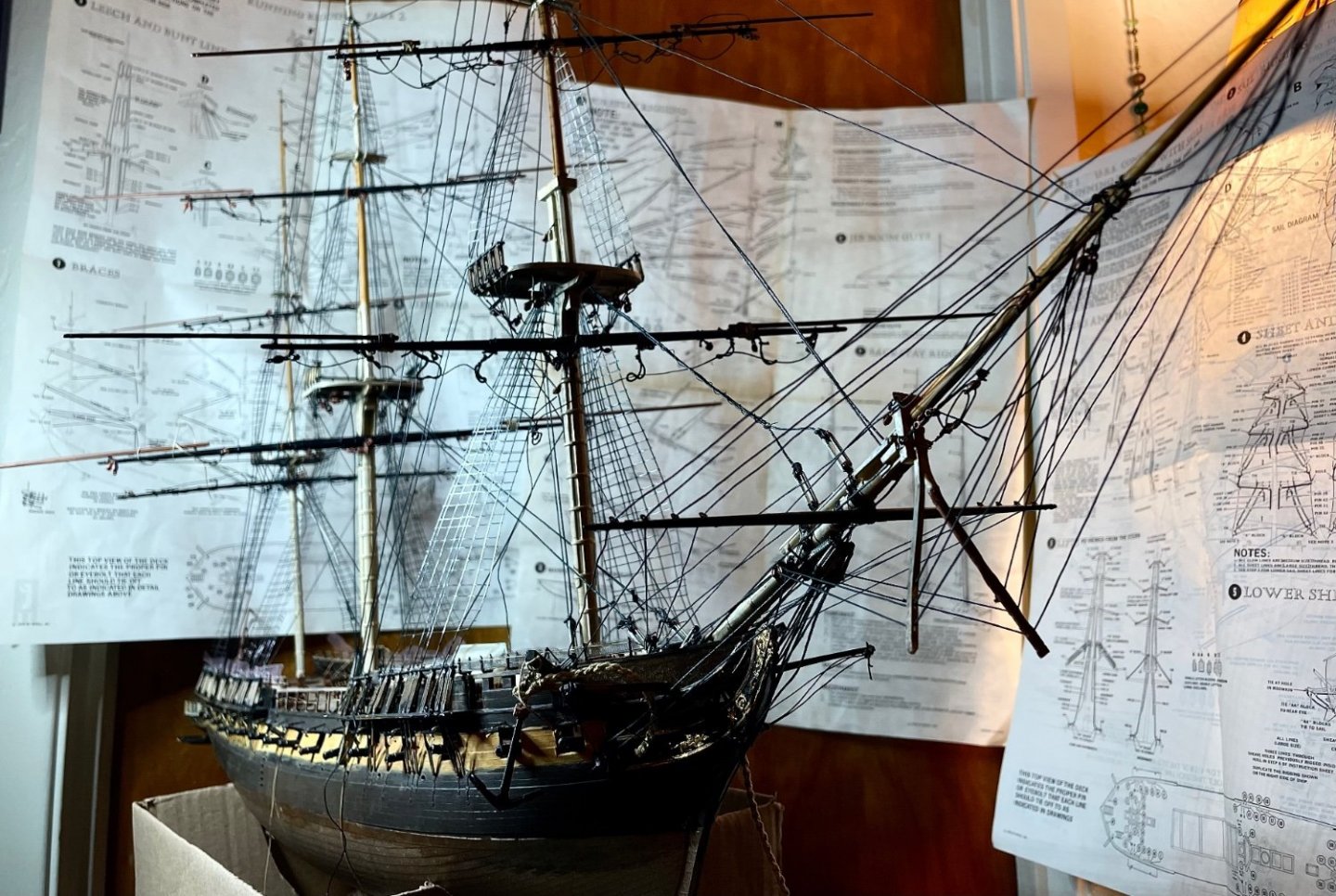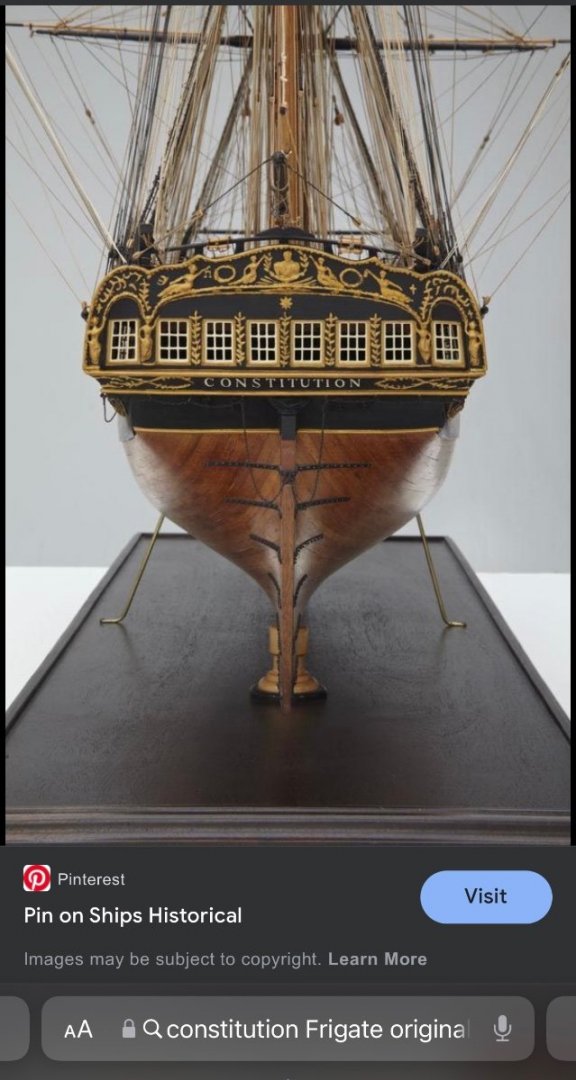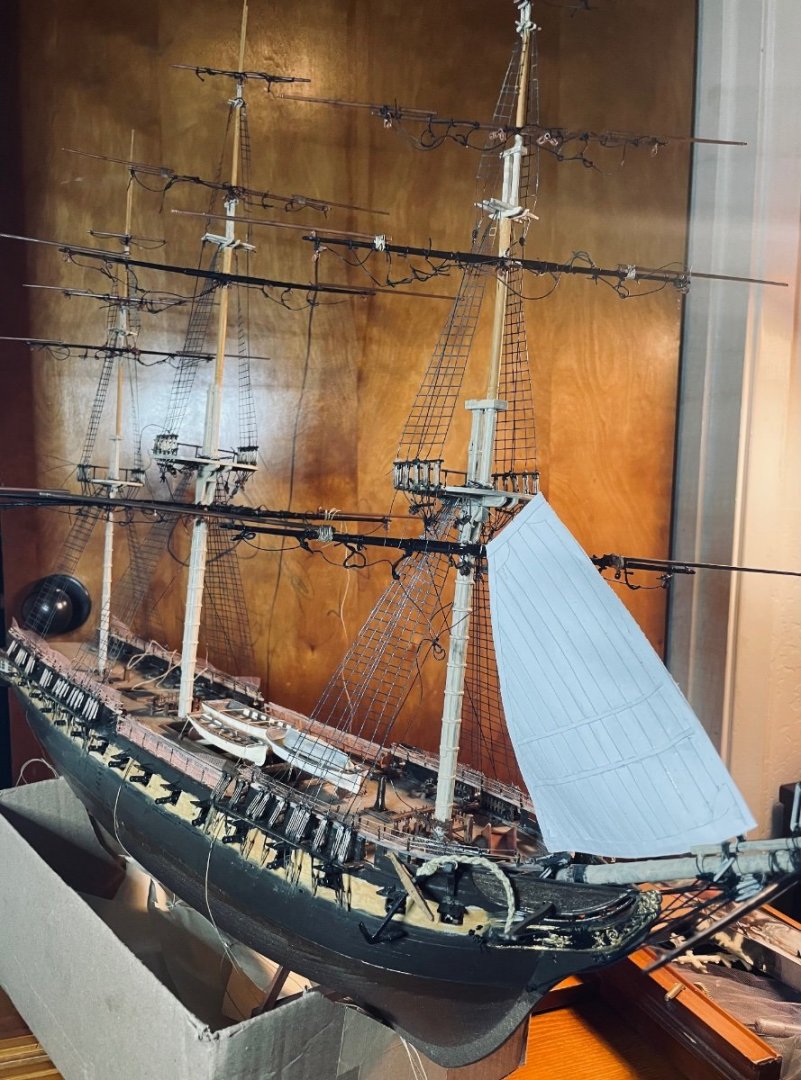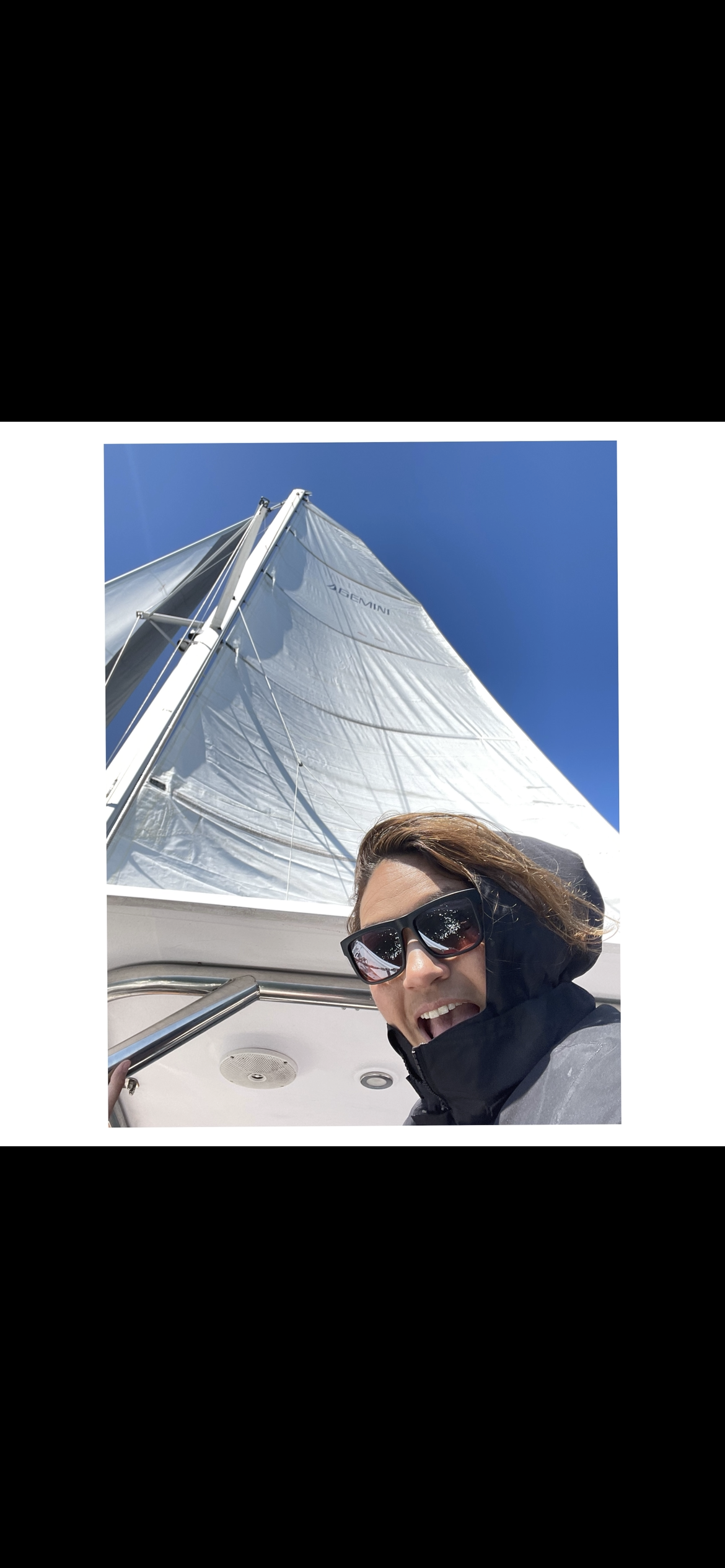
Valkyrja68
Members-
Posts
67 -
Joined
-
Last visited
About Valkyrja68
- Birthday 07/26/1980
Profile Information
-
Gender
Female
-
Location
Santa Cruz, Ca, USA
-
Interests
Sailing, shipwrecks, foul weather, miniatures, woodworking, lost skills, learning, debating, horses
Recent Profile Visitors
-
 Marcus.K. reacted to a post in a topic:
USS Constitution by Valkyrja68 - Revell - 1:96 scale - PLASTIC - 1978 kit
Marcus.K. reacted to a post in a topic:
USS Constitution by Valkyrja68 - Revell - 1:96 scale - PLASTIC - 1978 kit
-
 Knocklouder reacted to a post in a topic:
For Beginners -- A Cautionary Tale
Knocklouder reacted to a post in a topic:
For Beginners -- A Cautionary Tale
-
 dj.bobo reacted to a post in a topic:
USS Constitution by Valkyrja68 - Revell - 1:96 scale - PLASTIC - 1978 kit
dj.bobo reacted to a post in a topic:
USS Constitution by Valkyrja68 - Revell - 1:96 scale - PLASTIC - 1978 kit
-
 catopower reacted to a post in a topic:
For Beginners -- A Cautionary Tale
catopower reacted to a post in a topic:
For Beginners -- A Cautionary Tale
-
 SUBaron reacted to a post in a topic:
For Beginners -- A Cautionary Tale
SUBaron reacted to a post in a topic:
For Beginners -- A Cautionary Tale
-
 mtaylor reacted to a post in a topic:
Cringles, clews, and bridles oh my!
mtaylor reacted to a post in a topic:
Cringles, clews, and bridles oh my!
-
 mtaylor reacted to a post in a topic:
DMC Cotton
mtaylor reacted to a post in a topic:
DMC Cotton
-
 GrandpaPhil reacted to a post in a topic:
USS Constitution by Valkyrja68 - Revell - 1:96 scale - PLASTIC - 1978 kit
GrandpaPhil reacted to a post in a topic:
USS Constitution by Valkyrja68 - Revell - 1:96 scale - PLASTIC - 1978 kit
-
 GrandpaPhil reacted to a post in a topic:
USS Constitution by Valkyrja68 - Revell - 1:96 scale - PLASTIC - 1978 kit
GrandpaPhil reacted to a post in a topic:
USS Constitution by Valkyrja68 - Revell - 1:96 scale - PLASTIC - 1978 kit
-
I'll also add this wonderful and kind of funny email from Larry Ward of USSCMSG who confirms that I am the captain and may do as I see fit 😂👍🏽: Hi Adrienne, You have delved into a fascinating and confusing subject about which scant information is available, i.e. what did early frigates look like? And since all serious model builders are hyper about details, you have plenty of company. As to the colors used on USN sailing ships, in the first place the color scheme was determined by the Captain. And each Captain had his own preference, And each ship had several different Captains. And there were hundreds of ships, large and small. So, there are a thousand different possibilities. Which infers no matter what you decide, your chances of being correct are very positive in as much as there must have been at least one Captain who agreed with you. So, you as the builder are right, and no one can say you are wrong. Black hull, White gun stripe, Brown hull, Ochre gun stripe, whatever you like, you are the Captain. Prehistoric Ochre was a favorite color of the early cave men who used it to decorate their caves. Lord Nelson wasn't that old, but Ochre was also his favorite color, for his ship, the HMS Victory, which was painted Black hull and Ochre gun stripes. Soon all the British ships were painted the same as Nelson's ship because the Captains wanted to emulate their boss. (Good career move kind of thing). In the beginning the Constitution sometimes used the same scheme, depending on the Captain's preferences. But so as not to be confused with a British ship, the White gun strip became the most popular color for the gun stripe. It used to drive the constructors nuts, but the Captains preference also ruled the number and size of the guns aboard the Constitution. And the design features were also subject to what the Captain wanted, For instance sometimes the waist was open and with another Captain it was closed.
- 35 replies
-
- Constitution
- Revell
-
(and 1 more)
Tagged with:
-
Captains log: After cutting my sails and scoring my "seam lines" I found the same blackout material too thick to look natural as tabling and reef bands, so I opted for my sheer ripstop material. Glue was inadequate, messy and affected my paint so I used strong archival double sided tape and cut my strips from that. Then I used rabbit skin glue to stiffen and shape my sails. Below, the ripstop with two strips of double sided tape. This also made it possible to avoid shredding and cut very precise small strips. It was then necessary to paint them separately as they were very white. The addition of rabbit skin glue was a wise choice if I do say so, the sails hold shape and can be reshaped well. The only downside was it affected my double stick tape creating a ripple I dislike. In the future I will add the reefing and tabling after as in the above photo. Here is the beginning of the final haul to port, which has taken me enormous amounts of time and figuring as I navigate how to best approach attaching and rigging the full sails. An invaluable resource to me in doing this is The Young Sea Officer's Sheet Anchor; Or, A Key to the Leading of Rigging, and to Practical Seamanship. A free Google book written in 1853, surprisingly easy to follow, and chock full of nautical skill.
- 35 replies
-
- Constitution
- Revell
-
(and 1 more)
Tagged with:
-
 Valkyrja68 reacted to a post in a topic:
Cringles, clews, and bridles oh my!
Valkyrja68 reacted to a post in a topic:
Cringles, clews, and bridles oh my!
-
DMC Cotton
Valkyrja68 replied to Wacom's topic in Rope Making/Ropewalks's Discussions about Rope Making
Anchor is a comparable thread Also try Cosmo from Japan and Aurifloss. -
 Valkyrja68 reacted to a post in a topic:
Took the plunge.
Valkyrja68 reacted to a post in a topic:
Took the plunge.
-
So for those of you who make sails, how do you tackle the cringles and clews? I thought to just leave loops of thread out as I'm gluing/threading and reinforcing but I'm struggling with look vs scale as always. Do you use thin wire? Waxed thread? Superglued thread for stiffness? Do you go all the way around your sails? Or does the scale not necessitate having them visible at all? Any Suggestions and examples appreciated. My USS Constitution is 1/96. Thanks!
-
 Valkyrja68 reacted to a post in a topic:
USS Constitution by Valkyrja68 - Revell - 1:96 scale - PLASTIC - 1978 kit
Valkyrja68 reacted to a post in a topic:
USS Constitution by Valkyrja68 - Revell - 1:96 scale - PLASTIC - 1978 kit
-
 Valkyrja68 reacted to a post in a topic:
USS Constitution by Valkyrja68 - Revell - 1:96 scale - PLASTIC - 1978 kit
Valkyrja68 reacted to a post in a topic:
USS Constitution by Valkyrja68 - Revell - 1:96 scale - PLASTIC - 1978 kit
-
Captains Log: Although I'm at peace with cheating on the rigging and the generally poorly attempts thusfar, I cannot do so with the sails. Indeed one does not work without the other, but in Valkyrja's model ship world no one is losing sleep over the lack of proper knots. But a ship without sails is just ridiculous. I think I'd rather see burlap sack sails than none at all....But let's hope it doesn't come to that. I've decided on what I feel to be a happy medium between realism and scale, a trade-off for my aesthetic, and I'm going to be implementing some (perhaps) unconventional techniques so that I can achieve this. I'm also going to repeat some of what I've already said but I want all my sources together. So I started with the 1976 Revell Model Kit, which although plastic, I find to be very fine in detail and realism, something I don't see ever in today's age. The rigging was brutal so don't look too close, but I'm going to pull the "it's my first model ship build" card. I don't know what I was thinking but I ended up putting the upper masts at the wrong location and have since amended that. The Revell Kit comes with these plastic sheet sails that I scoffed at in distaste, but as I have now researched and experimented till my eyes bled, I can easily say I understand why they went that route...someone obviously had the foresight to want at least a few of their models completed... I still don't like them, and after all the blood sweat and tears that went into that stupid rigging, how could I not give her the sails she deserves? I am using the 1927 restoration sail plans by the Boston Navy Yard and generously offered for our use by the U.S.S. Constitution Museum, who also provided most of the information I was looking for under Modeler Resources. The plans differ slightly from the Revell Kit, but are more accurate for the look I wanted to represent. Much invaluable help can be found in sail details, verbiage and actual use provided by the Historic Naval Ships Association textbook of seamanship manual, it's very much worth the read. I printed the sail plans not thinking of printer scale and had to rescale all the templates, which may seem like more work than necessary (and it was), but I found it a good revisit of scaling math. In the interest of humor I will admit that I was extremely rusty and originally converted all the measurements to metric before I decided to use an engineers ruler....like I said...unnecessary work- here's a snap of my hot mess that makes sense probably to myself only. I used an engineers ruler because I hate fractions and it provides much more precision than a standard ruler (architects rulers are, I believe, what most real modelers use). The fabric I decided on after all my experiments was the Blackout canvas. It's true that it's heavier than scale and true to form, doesn't allow for any light, but I really liked the look and way it stretches and holds form. If anyone decides to try it out remember to mirror your studding sails as blackout fabric is canvas on one side and flat on the other. The added benefit given by the nature of its construction, allowed me to score the seam lines instead of painting or sewing them on. I'm at another decision point on whether I want to add any color, My Constitution has organically (or maybe subliminally) ended up as she was upon maiden launch, I'll be adding the Hercules figurehead and original rendition of the Greco-Roman gallery decoration. I've had a hell of a time finding an actual reliable rendering of these. But after painstakingly searching and sifting through The National Maritime Historical Society magazine archives, I'm using the Hercules as envisioned here and here as my "inspiration" lol. I could not find anything on the gallery aside from this ONE rendering which I find perfect, but I have no idea who posted it as there is no alluding to the maker or what their source was...so mysterious. I also debating whether I want/need anything on the sails. In her beginning her sails would not have been so weathered as I've seen in other models but I may add some light weathering/shading for depth and realism. It's also unnecessary to do anything other than stretch the fabric to form it, but I can't believe that will withstand gravity for very long, and the non canvas side is very slightly "flocked" which I fear will end up looking fuzzy after manipulating it. So the next decision is what to treat it with. I'm really leaning toward "RSG" or rabbit skin glue, since I won't be fully painting them with acrylic. RSG if you are unfamiliar is an archival glue that back in the old old days sculptors used in part to make "compo" or composition ornament for decorative picture frames, and was the standard ingredient in traditional gesso for priming and sizing painters canvases. I am an oil painter and past conservator, so I have it (it's really cheap), and it's amazing stuff, with all kinds of uses. When used as a size, it's transparent, sealed, and tightens and stiffens fabric. Adjusting the ratio of water, adjusts the temperament and strength. Nevermind, I'm totally using it lol.
- 35 replies
-
- Constitution
- Revell
-
(and 1 more)
Tagged with:
-
 Valkyrja68 reacted to a post in a topic:
On using different fabrics for netting, sails, and hammocks- a question of scale and realism
Valkyrja68 reacted to a post in a topic:
On using different fabrics for netting, sails, and hammocks- a question of scale and realism
-
Posting video
Valkyrja68 replied to Valkyrja68's topic in How to use the MSW forum - **NO MODELING CONTENT**
If any of you would like to see the greatest sailing video of all time- or revisit, here it is -
I guarantee if you have not seen this, it will be the best thing you've ever watched on YouTube. https://youtu.be/ZLzBDhilDL0
-
- Nautical history
- sailing a tall ship
- (and 3 more)
-
 Valkyrja68 reacted to a post in a topic:
Posting video
Valkyrja68 reacted to a post in a topic:
Posting video
-
 Valkyrja68 reacted to a post in a topic:
Posting video
Valkyrja68 reacted to a post in a topic:
Posting video
-
 Valkyrja68 reacted to a post in a topic:
Posting video
Valkyrja68 reacted to a post in a topic:
Posting video
-
Posting video
Valkyrja68 replied to Valkyrja68's topic in How to use the MSW forum - **NO MODELING CONTENT**
-
 Valkyrja68 reacted to a post in a topic:
Posting video
Valkyrja68 reacted to a post in a topic:
Posting video
-
 Valkyrja68 reacted to a post in a topic:
Posting video
Valkyrja68 reacted to a post in a topic:
Posting video
-
Hello all, Is it possible to post a video to the forum? I am inquiring in advance to decide whether it would be better to post or link a video to my build log, or rather keep it in picture form. That being said, on a different topic-is there a place to leave a link to a historical sailing video our members may find interesting, or is it best to keep content strictly to our own builds? thank you!
-
Captains Log: Note to future self: Self, remember how you decided to make your own sails and found the earliest blueprints then didn't use PPPPPP? Lest you have forgotten, you didn't bother to check the scale of your prints and then had to manually convert all the original measurements of each 46 sails to metric (hopefully you've learned how to read a ruler, or we've finally come to our senses and moved to metric) then had to redraw and cut the templates so you could then cut out each sail twice? Don't make that mistake again dummy.
- 35 replies
-
- Constitution
- Revell
-
(and 1 more)
Tagged with:
-
I don't feel that strongly about it, I would potentially buy sails in the future, or other accoutrements that I needed, but I also like reusing and repurposing items instead of consuming when I do not need to. No if I was doing this for sale say or as some sort of profession I may want to be a little bit more discerning, but it's really just for fun. I do appreciate that link and I believe other people will certainly appreciate it. The only real hard stance I have on anything, is that there is not only one way to do something lol!!
- 35 replies
-
- Constitution
- Revell
-
(and 1 more)
Tagged with:
-
Well I agree with you of course! I was testing a method Cathead uses with bond paper- a considerably lighter material and with considerably better results lol! I just wanted to see how it would work with fabric, the fabric that I'm using is far too thick for this application but some of the other fabrics would work fairly well for it I believe.
- 35 replies
-
- Constitution
- Revell
-
(and 1 more)
Tagged with:
-
@lmagnaCool thanks! That first post/picture looks like the hammocks would fall right out 😂 but the gist is there. I have seen that person/company's sails before, they are very well done. I'd have to say as nice as they are made they aren't very time appropriate though. Back then the sails were made of either flax or hemp and would have been a sort of canvasy brown and rather opaque. I'm not so much into buying things as I prefer to make them, even if they aren't as good. I'm not a historical buff or anything, more of a casual hobbyist. But it's an excellent link to leave here as other people may not want to go through all that entails making your own. I, myself, prefer to make things as difficult for myself as possible...it's kind of my thing. Haha
- 35 replies
-
- Constitution
- Revell
-
(and 1 more)
Tagged with:
-
- 35 replies
-
- Constitution
- Revell
-
(and 1 more)
Tagged with:
About us
Modelshipworld - Advancing Ship Modeling through Research
SSL Secured
Your security is important for us so this Website is SSL-Secured
NRG Mailing Address
Nautical Research Guild
237 South Lincoln Street
Westmont IL, 60559-1917
Model Ship World ® and the MSW logo are Registered Trademarks, and belong to the Nautical Research Guild (United States Patent and Trademark Office: No. 6,929,264 & No. 6,929,274, registered Dec. 20, 2022)
Helpful Links
About the NRG
If you enjoy building ship models that are historically accurate as well as beautiful, then The Nautical Research Guild (NRG) is just right for you.
The Guild is a non-profit educational organization whose mission is to “Advance Ship Modeling Through Research”. We provide support to our members in their efforts to raise the quality of their model ships.
The Nautical Research Guild has published our world-renowned quarterly magazine, The Nautical Research Journal, since 1955. The pages of the Journal are full of articles by accomplished ship modelers who show you how they create those exquisite details on their models, and by maritime historians who show you the correct details to build. The Journal is available in both print and digital editions. Go to the NRG web site (www.thenrg.org) to download a complimentary digital copy of the Journal. The NRG also publishes plan sets, books and compilations of back issues of the Journal and the former Ships in Scale and Model Ship Builder magazines.


